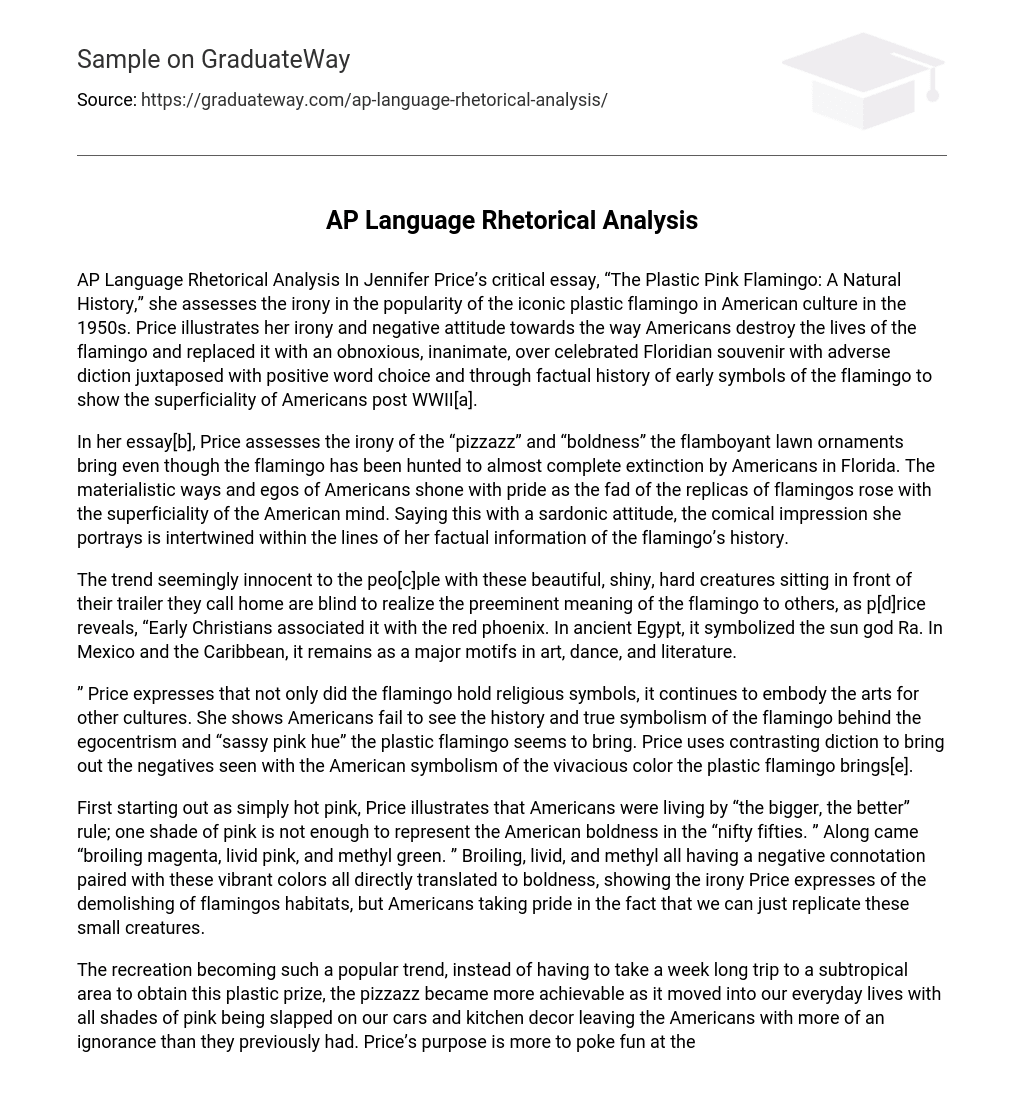Jennifer Price’s critical essay, “The Plastic Pink Flamingo: A Natural History,” discusses the irony and negative attitude towards the popularity of the iconic plastic flamingo in 1950s American culture. Price showcases this irony by highlighting how Americans destroy the lives of the flamingo and replace it with a loud, lifeless souvenir from Florida. She achieves this through contrasting negative language with positive word choice and presenting factual history of early symbols of the flamingo. This serves to demonstrate the superficiality of Americans in the post-World War II era.
In her essay, Price explores the paradox of the “pizzazz” and “boldness” brought by flamboyant lawn ornaments, despite the near extinction of real flamingos in Florida due to hunting by Americans. The materialistic tendencies and egos of Americans are proudly displayed through the popularity of replica flamingos, reflecting the superficiality of American culture. Price conveys this message with a sardonic tone, intertwining wit and factual information about the history of flamingos.
The trend may appear harmless to those who have these attractive, polished, solid creatures positioned in front of their mobile homes that they consider as their dwelling. However, they fail to comprehend the paramount significance of the flamingo to others. As price uncovers, “The early Christians connected it with the red phoenix. In ancient Egypt, it represented the sun god Ra. In Mexico and the Caribbean, it continues to be a prominent theme in art, dance, and literature.”
“Price discusses the religious and artistic significance of the flamingo in various cultures. She argues that Americans overlook the historical and symbolic value of the flamingo due to their self-centeredness and focus on its vibrant pink color. Price employs contrasting language to highlight the negative aspects associated with the American interpretation of the plastic flamingo’s lively hue.”
Initially, starting off as hot pink, Price demonstrates that Americans adhered to the belief that bigger is better. This notion of American boldness in the 1950s is captured through the use of multiple shades of pink. The introduction of vibrant colors such as broiling magenta, livid pink, and methyl green adds to the representation of boldness. Despite the negative connotations associated with these colors, Price emphasizes the irony of Americans demolishing flamingos’ habitats yet taking pride in their ability to replicate these small creatures.
The popularity of recreation has made it easier for us to obtain plastic prizes. Instead of needing to go on a week-long trip to a subtropical area, we can now incorporate the pizzazz into our everyday lives. We see all shades of pink being used on our cars and kitchen decor, which shows ignorance among Americans. Price’s purpose is to mock the culture and make fun of the foolishness involved.
Price’s writing exhibits a negative and sarcastic tone towards the ignorance and irrationality of American thinking. Through her use of juxtaposed diction, she ridicules the Americans who remain oblivious to the significance of flamingos in art and literature. We have driven these birds to the brink of extinction, yet the Americans seem unfazed. However, we can replace them with our own replicas.





